Connecticut has a really interesting and unique lake system. The Connecticut River comprises a series of four lakes. Their names match the number in the sequence of water bodies. The entire area is known for delivering unbelievable angling experiences.
Before we begin, we should note that this list veers outside the state’s borders. The Connecticut Lake system is actually in New Hampshire before the river flows down into the state and drains into the Atlantic. So, for this list, the first five lakes will be part of the Connecticut River system while the latter five are located in the state of Connecticut itself.
Away from the Connecticut River, the state offers many other stunning lakes. Saugatuck Reservoir has fantastic fishing and a wheelchair-accessible fishing dock. Small and quiet Stillwater Pond provides a relaxing, serene place for anglers and outdoor enthusiasts to really enjoy the crystal clear, beautiful water.
Connecticut’s lakes deliver nearly incomprehensible beauty, an unimaginably huge range of fish species, hundreds of bird species, and just about anything else you could wish for in terms of outdoor activities. Let’s dive in and get started learning about the best lakes in Connecticut’s fascinating lake system!
1. First Connecticut Lake

First Connecticut Lake is the largest lake on the First Connecticut River offering some of the best fishing in New England
©NEKVT/Shutterstock.com
- Surface Area: 1,638 acres
- Max Depth: 163 Feet
- Camping/Overnight Available: Yes
- Boating/Docks Available: Yes
- Swimming Permitted: Yes
- Fishing Permitted: Yes
- Best For: Trout Fishing, Wildlife Viewing, World Class Fly-Fishing Downstream
Rainbow & Brook Trout, Landlocked Atlantic Salmon, and Perch swim the glacial waters of First Connecticut Lake. Anglers looking for even more action can head downstream and take advantage of the world-class fly-fishing. Boats are the best way to fish First Connecticut Lake.
First Connecticut Lake also known as Connecticut Lake or First Lake offers three boat launches. The launch near the dam on US Route 3 has the best parking and is the most developed. The other two boat launches have limited parking and amenities.
The lake also hosts an array of species to view for wildlife enthusiasts and birdwatchers. Some of the animal and bird species you might spot are Osprey, Eagles, Nesting Loons, Moose, Deer, Fox, and Seagulls. First Connecticut Lake is part of the Connecticut River, one of the best places to fish in New England.
2. Second Connecticut Lake

Second Connecticut Lake is a picturesque, serene body of water offering great fishing and wildlife
- Surface Area: 1,102 acres
- Max Depth: 63 Feet
- Camping/Overnight Available: Yes
- Boating/Docks Available: Yes
- Swimming Permitted: Yes
- Fishing Permitted: Yes
- Best For: Natural Beauty, Trout & Salmon Fishing, Loon Viewing
Second Connecticut Lake is a beautiful glacial lake on the Connecticut River. The lake is generally less crowded than nearby First Lake and Lake Francis. It’s still a hotspot for anglers looking to catch Lake Trout, Brook Trout, Landlocked Salmon, and Cusk.
Wildlife enthusiasts and photographers can capture the serene beauty of the picturesque environment. Several species of animals and birds inhabit the area including Loons, Herons, Moose, Deer, and Fox. Visitors of Second Connecticut Lake can enjoy a meal and utilize one of the great picnic areas or barbeques.
Ice fishing for Trout is popular during the winter months at Second Connecticut Lake. The lake is one of the more secluded of the Connecticut lakes and therefore only has one boat ramp.
3. Third Connecticut Lake
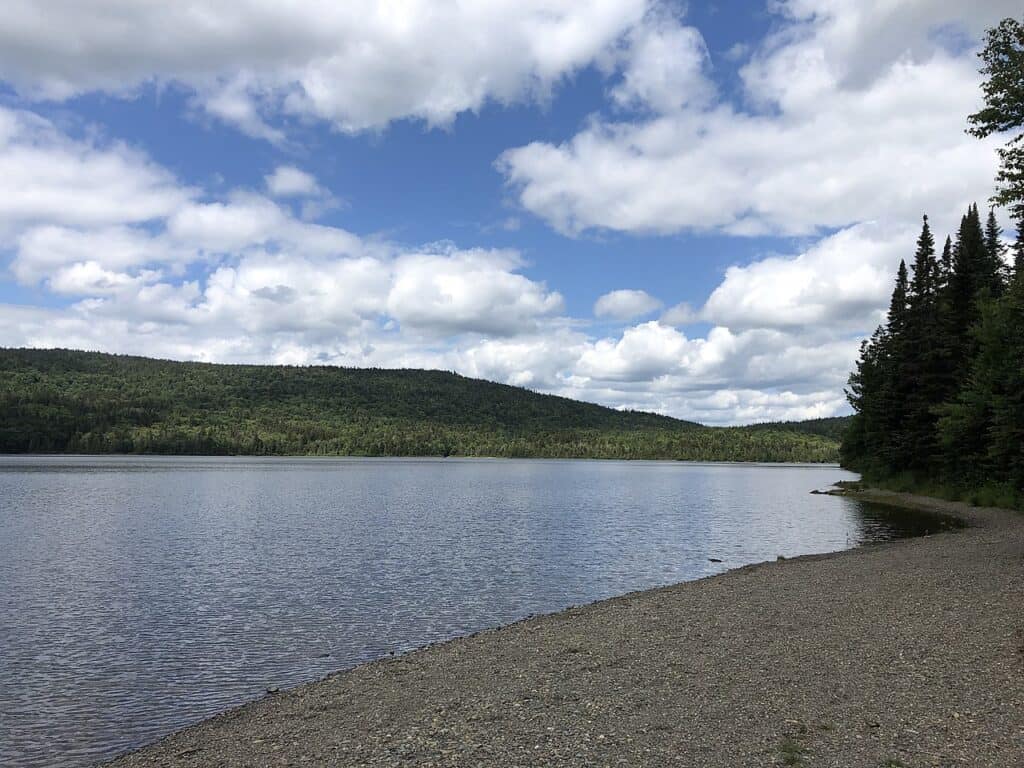
Anglers looking for a great fishing experience at a more undeveloped body of water hit Third Connecticut Lake
- Surface Area: 231 acres
- Max Depth: 101 Feet
- Camping/Overnight Available: Nearby
- Boating/Docks Available: Yes
- Swimming Permitted: Yes
- Fishing Permitted: Yes
- Best For: Pristine Crystalline Water, Undeveloped & Secluded, Rainbow & Lake Trout, The Legend of Sophia
The third lake in the Connecticut Lake system is a mostly undeveloped body of water. That doesn’t stop anglers from utilizing the small boat ramp or throwing on some waders in hopes of landing a beautiful trout.
There isn’t camping directly at the lake however Deer Mountain Campground is very close by. Third Connecticut Lake is generally less popular than the First and Second lakes so visitors can expect a more isolated experience.
An interesting piece of history is that the lake was once known as Lake Sophia stemming from The Legend of Sophia. Wildlife is quite common at Third Connecticut Lake. Loons are known to frequent the area so birdwatchers and photographers are often present taking in the lake’s majestic beauty.
4. Fourth Connecticut Lake
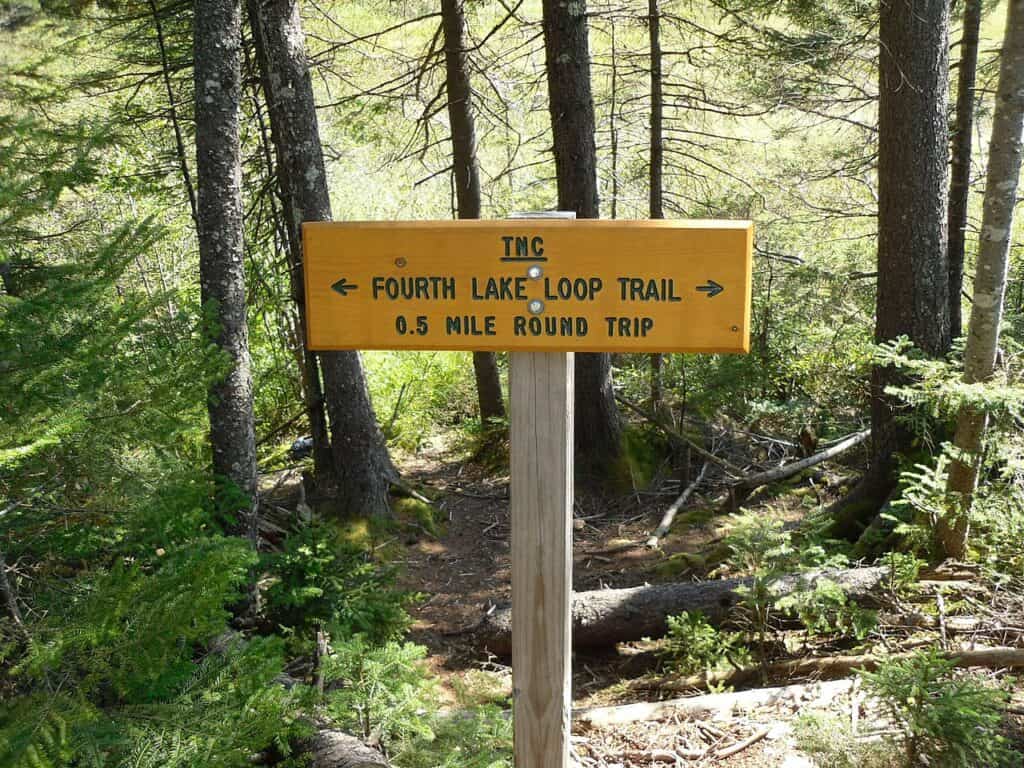
Fourth Connecticut Lake is a small lake on the Nature Conservancy Fourth Connecticut Lake Preserve accessible by hiking only. Hunting, fishing, boating, swimming, and camping are not permitted
- Surface Area: 1.8 acres
- Max Depth: 5 Feet
- Camping/Overnight Available: No
- Boating/Docks Available: No
- Swimming Permitted: No
- Fishing Permitted: No
- Best For: Sightseeing, Wildlife Viewing, Hiking, Photography
Fourth Connecticut Lake isn’t a massive body of water, in fact, it’s been described as more of a bog. The glacial lake is part of a seventy-eight-acre protected nature reserve. The lake is very important because it’s actually the beginning of the Connecticut River.
The protected status of the Nature Conservancy Fourth Connecticut Lake Preserve means there’s no hunting, trapping, or fishing permitted at Fourth Connecticut Lake. There is additionally a no-dogs policy.
The lake and surrounding areas are full of wildlife including River Otter, Beaver, Moose, White-Tailed Deer, Black Bear, Spruce Goose, and Three-Toed Woodpeckers. Visitors should note that Fourth Connecticut Lake is on the Canadian border and is only accessible by hiking. There is no need to check in with the border guards prior to hiking to the lake.
5. Lake Francis
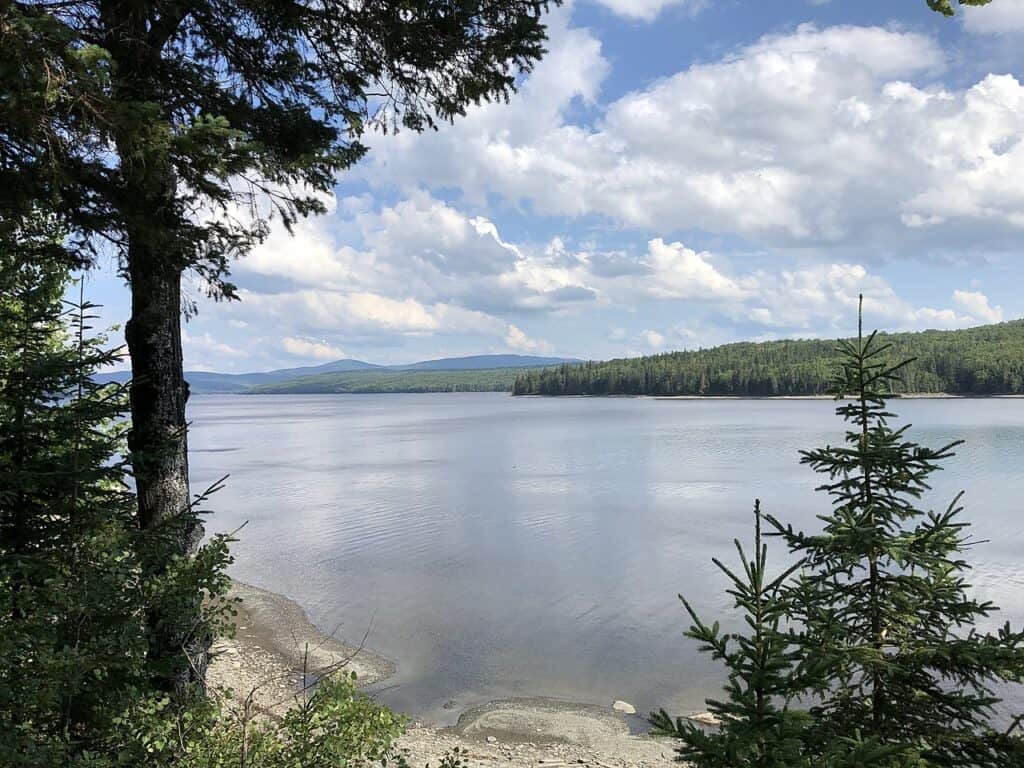
Lake Francis is a full-service lake with camping, hunting, wildlife viewing, boat launches, and awesome trout fishing
- Surface Area: 1,934 acres
- Max Depth: 82 Feet
- Camping/Overnight Available: Yes
- Boating/Docks Available: Yes
- Swimming Permitted: Yes
- Fishing Permitted: Yes
- Best For: Trout Fishing, Wildlife Viewing, Birdwatching
Lake Francis is a full-service lake offering hunting, ATV riding, camping, wilderness cabins, hiking, paddling, snowmobiling, cross country skiing, and snowshoeing. There are forty-four campsites available at Lake Francis for extended stays.
Over one hundred bird species have been identified at the lake making it a huge draw for wildlife photographers. Some of the wildlife seen at the lake includes Bald Eagles, Loons, Endangered Woodpeckers, Moose, and Bears.
Anglers can expect to find Land Locked Salmon, Lake, Rainbow & Brown Trout, Chain Pickerel, Rainbow Smelt, and Burbot swimming around Lake Francis. Ice fishing for trout is quite popular; it is permitted from January into March. There are two boat launches available at the lake for full-on fishing missions!
6. Hop Brook Lake
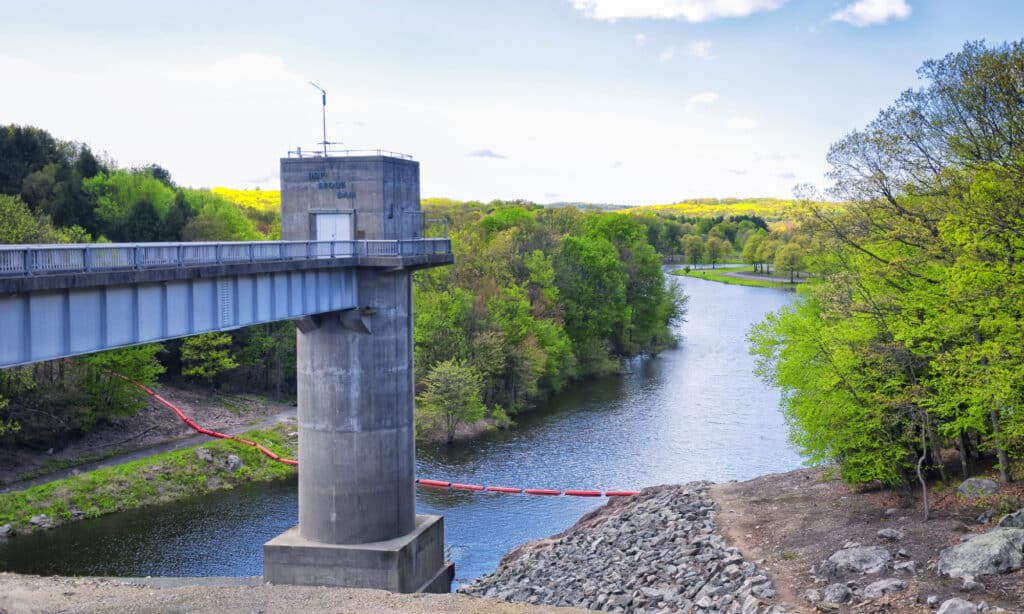
Hop Brook Lake is known for its diverse range of species available to anglers looking to fish in a place without motorized boats
©Dan Hanscom/Shutterstock.com
- Surface Area: 10,496 acres
- Max Depth: 18 Feet
- Camping/Overnight Available: No
- Boating/Docks Available: No Motorized Boats
- Swimming Permitted: Yes
- Fishing Permitted: Yes
- Best For: Diversity of Fish Species
Hop Brook Lake provides a wide array of fish species. Anglers fishing the lake can expect to catch Brown, Brook, or Rainbow Trout, Largemouth Bass, Black Crappie, Perch, Panfish, or maybe a Bluegill. Motorized boats are not permitted on Hop Brook Lake, however, canoes, kayaks, and rowboats are.
There is a myriad of wildlife that inhabits Hop Brook Lake. Hawks, Owls, Osprey, Turkeys, Bald Eagles, White-Tailed Deer, Black Bears, Coyotes, Foxes, Bobcats, Raccoons, and Beavers are all known to frequent the area. So grab your binoculars or camera!
Camping is not available at Hop Brook Lake however visitors can enjoy the seven miles of hiking trails, on-site ball field, volleyball courts, horseshoe pits, picnicking facilities, athletic fields, and picnic shelters. If you’re planning on swimming be sure to check for closures due to occasional water quality problems.
7. Saugatuck Reservoir
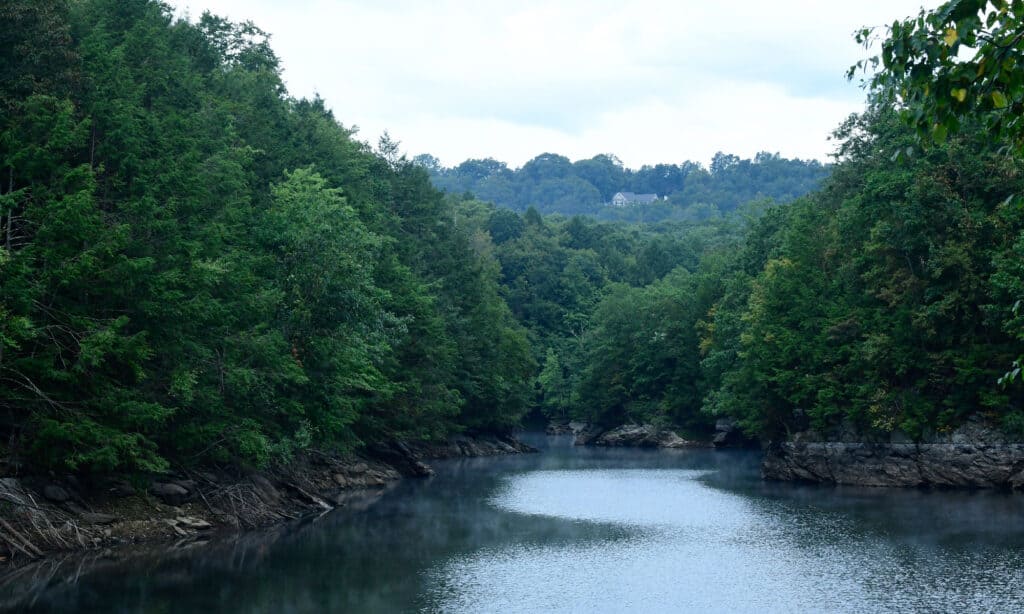
Anglers know that the best fishing at Saugatuck Reservoir is found near the wheelchair-accessible fishing dock by the Samuel P. Senior dam
©Danne Lacance/Shutterstock.com
- Surface Area: 827 acres
- Max Depth: 110 Feet
- Camping/Overnight Available: No
- Boating/Docks Available: No
- Swimming Permitted: Yes
- Fishing Permitted: Yes
- Best For: Wheelchair-accessible Fishing Dock, Centennial Watershed State Forest
A smattering of fish species calls Saugatuck Reservoir home including American Eel, Bluegill, Brook & Brown Trout, Bullhead, Catfish, Chain Pickerel, Crappie, Pumpkinseed, Rock, Largemouth & Smallmouth Bass, Walleye, White Perch and Yellow Perch.
The best fishing is found at the wheelchair-accessible fishing dock near the Samuel P. Senior dam. Hiking is required to get to the other fishing spots. Wading into the water to fish is not permitted at Saugatuck Reservoir.
The reservoir is surrounded by the Centennial Watershed State Forest providing ample habitat for a range of birds and critters. Hooded Mergansers, Loons, Pileated Woodpeckers, and Bald Eagles are all commonly spotted. The lake and surrounding area are extremely beautiful and offer a serene getaway from the more crowded lake atmosphere.
8. Stillwater Pond
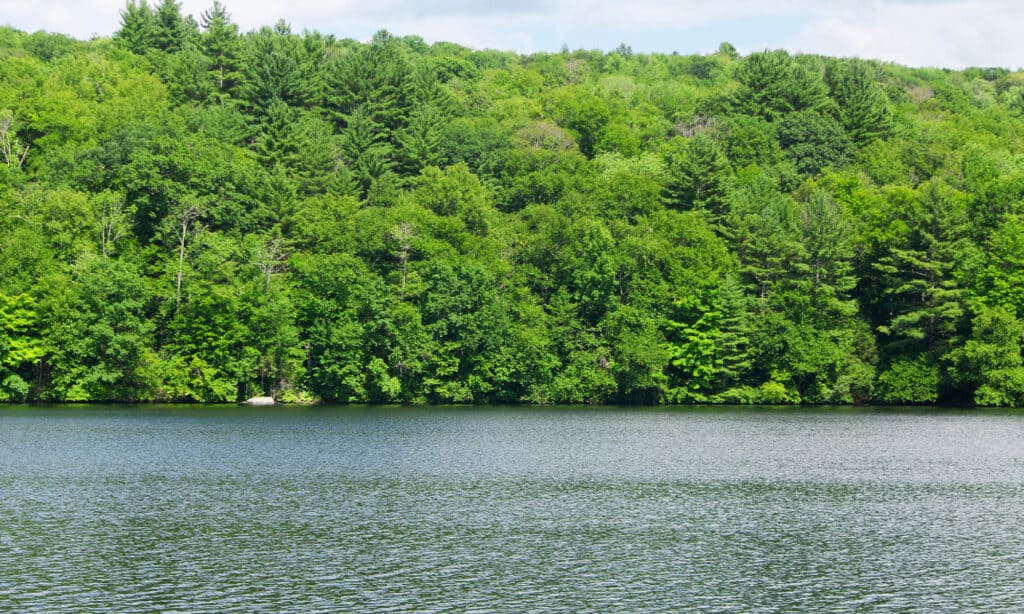
Stillwater Pond is a quiet, serene body of water locals lovingly refer to as Mirror Lake
©Dan Hanscom/Shutterstock.com
- Surface Area: 100 acres
- Max Depth: 25 Feet
- Camping/Overnight Available: No
- Boating/Docks Available: Yes
- Swimming Permitted: Yes
- Fishing Permitted: Yes
- Best For: Historical Electrical Generation for Brass Mill
Stillwater Pond is a petite, serene, still, crystal clear body of water that locals often refer to as Mirror Lake. It’s a popular destination for swimming, sunbathing, and fishing. A local tip is to watch out for fallen acorns during autumn because they can be a hazard.
Anglers looking to get away from the noise of motorized engines know that Stillwater Pond provides a nice, quiet experience. Fish species at the lake include Largemouth Bass, Brook Trout, Chain Pickerel, Bullheads, Panfish, and Bluegill. Shoreline and boat fishing are both said to be excellent options.
Stillwater Pond has one paved boat ramp with eleven parking spaces. Note that no docks are available. Electric motors are permitted but internal combustion, or gasoline, engines are prohibited.
Largest Lake Within Sixty Miles Of New York City
9. Candlewood Lake

Known for Smallmouth Bass, Tournament Fishing and rates Bassmaster Top 25 Lakes, Candlewood Lake is Connecticut’s favorite!
- Surface Area: 5,420 acres
- Max Depth: 90 Feet
- Camping/Overnight Available: Nearby Campgrounds, No at-lake camping or fires
- Boating/Docks Available: Yes
- Swimming Permitted: Yes
- Fishing Permitted: Yes
- Best For: Smallmouth Bass, Tournament Fishing, Bassmaster Top 25 Lakes
Candlewood Lake sports a massive array of fish species, Smallmouth & Largemouth Bass, Brown, Rainbow Trout, White and Yellow Perch, White Catfish, Walleye, Black Crappie, Bullheads, Bluegill, Pumpkinseed, Redbreast, Rock Bass, Carp, and Chain Pickerel. One of the main attractions is Smallmouth Bass fishing in particular. Candlewood is known to have tournament fishing waters so there’s no wonder why it’s considered the best lake in Connecticut.
Candlewood doesn’t offer direct camping at the lake and no fires are allowed. There are ample campgrounds surrounding the lake for full camping expeditions.
There is plenty more to do at the lake than take advantage of its amazing fishing. A few of the other activities available are water skiing, wake surfing, swimming, kayaking, canoeing, boat rentals, ice skating, cross country skiing, and ice fishing. Tourists to the area might wish to explore the nearby towns Brookfield, Danbury, New Fairfield, New Milford, and Sherman.
Connecticut’s Largest Natural Lake
10. Bantam Lake
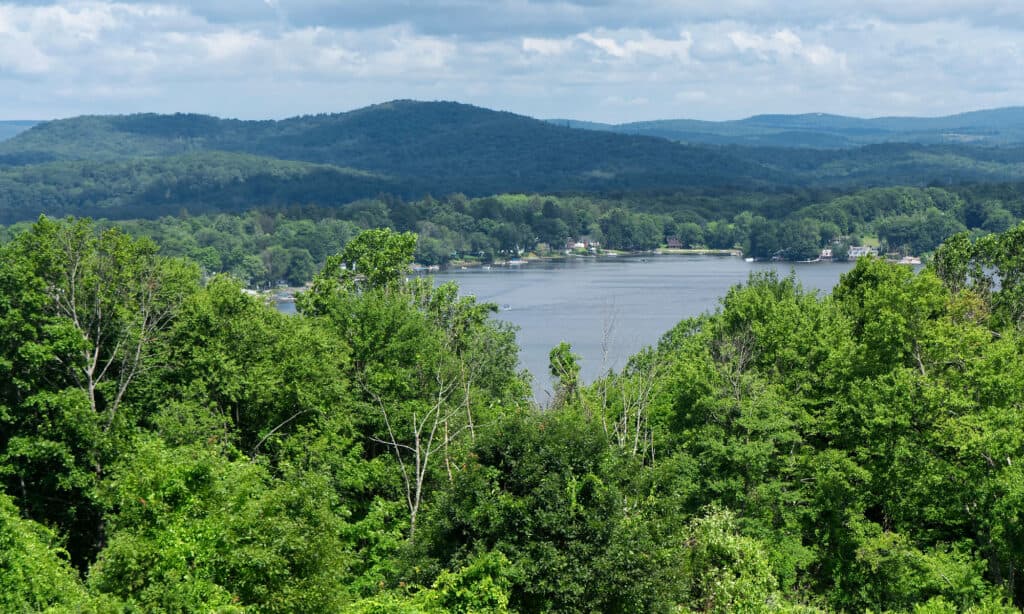
Anglers gaze into the waters at Bantam Lake hoping to hook the next record-winning Pike
©iStock.com/Daniel Hanscom
- Surface Area: 937 acres
- Max Depth: 25 Feet
- Camping/Overnight Available: Yes
- Boating/Docks Available: Yes
- Swimming Permitted: Yes
- Fishing Permitted: Yes
- Best For: Bass Fishing Tournaments, Record Winning Pike, Great Cusine Nearby
Located in western Connecticut, Bantam Lake is known for great fishing, good enough to host twenty bass tournaments a year! Anglers can also expect to hook Chain Pickerel, Bluegill, Large & Smallmouth Bass, Northern Pike, and Black Crappie. The pike at Bantam Lake are decent size ranging from ten to fifteen pounds with a record set at twenty-eight and a half!
If you’re not an angler perhaps some of the absolutely stunning cuisine at nearby Arethusa Al Tavolo will tempt you to the waters. Visitors can take a trip to Arethusa Farm, a real dairy farm with over three hundred cows! Maybe cow farms and awesome restaurants aren’t your speed either, not to fret, Sandy Beach complete with shady picnic areas, a canoe launch, snack shack, and afloat with slide might be for you!
Morris Town Beach is another option at Bantam Lake for swimming and enjoying the water. If all of that wasn’t enough, visitors can also explore the nearby distillery and vineyard. There’s plenty to do for everyone at Bantam Lake.
Thank you for reading! Have some feedback for us? Contact the AZ Animals editorial team.








